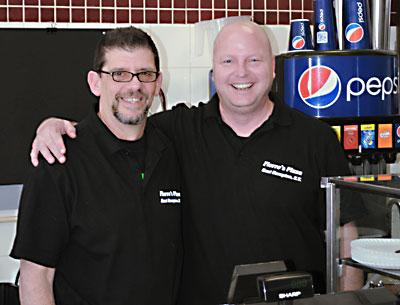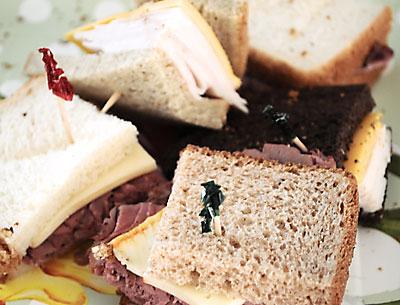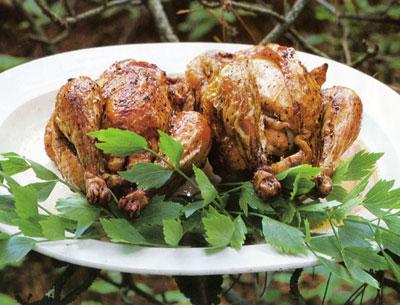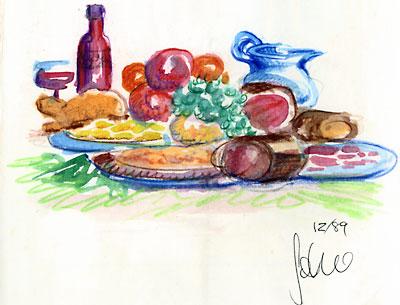A New Community Farm Grows in Gansett
A New Community Farm Grows in Gansett
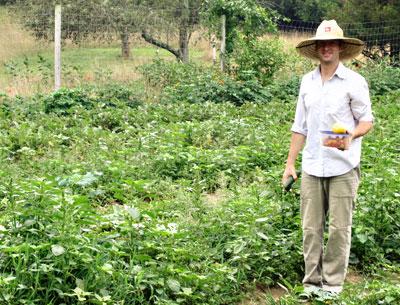
As the earth awakens from a long, cold slumber, Frank Trentacoste is awakening to a new path, exchanging a 15-telephone turret and bank of Bloomberg terminals for a tractor and pickup truck.
Mr. Trentacoste, who was an equities strategist and director at Macro Risk Advisors and worked before that at two New York hedge funds, has established Bhumi Farm, an organic vegetable farm, on the Amagansett land he leased from the Peconic Land Trust.
He plans to grow a range of produce on his two-acre plot, including beets, broccoli, cabbage, carrots, cauliflower, lettuce, onions, potatoes, and tomatoes, which will be sold at farmers markets at the Hayground School in Bridgehampton and at Nick and Toni’s restaurant in East Hampton. Mr. Trentacoste has also applied to sell at farmers markets from Montauk to Westhampton Beach.
Like the nearby Quail Hill Farm, Bhumi will be a cooperative farm in the community supported agriculture format. Families and individuals can purchase a membership for the 22-week season between Memorial Day and Oct. 20, or for smaller periods within that span. Mr. Trentacoste hopes to realize 60 percent of the farm’s revenue through these memberships, with farmers markets accounting for the balance.
With a five-year lease in hand, the new farmer’s plans are the manifestation of an inner transformation that he hopes will extend to the community. Though he maintains a positive view of his work and the financial industry, a life under the open skies in the fields off Town Lane reflects the changed priorities to which many a transplanted urbanite can relate.
In New York, he said, “you have pace and noise and masses, and culturally it’s more robust. But it gets exhausting. As time went on I wanted something more tangible, a feeling that I was contributing more to society at large. It’s a huge lifestyle change. I’ll make a lot less money, clearly. My life, hopefully, will be more rewarding in other ways.”
Mr. Trentacoste, who grew up in Lynbrook, exuded passion and excitement for his new career as he walked the length of his plot on a cold and windy afternoon earlier this month, measuring the parcel he will soon till. “One of the driving forces of the farm is for people to get grounded and back into earth,” he said. “We just wanted a place where people could slow down.”
That slowing, he said, should extend to diet, as illustrated in the recent emphasis on consuming locally grown food. “Life has gotten so crazy,” he said. “You’re texting, you don’t have conversations anymore. That pace has manifested itself into really poor diets, and those poor diets have led to really, really bad health in children. It makes me sad. I’m not saying people are bad parents, but this is where society is heading. Society has really moved away from farming — growing your own food, preparing your own food — to its own detriment.”
The statistics are well known and irrefutable: obesity, diabetes, and heart disease are epidemic in the United States, and some types of food — fast, junk, processed — are leading culprits. “The goal of the farm is to connect people to the land,” said Mr. Trentacoste, a vegetarian since 2009. (Bhumi, the Hindu goddess of the earth, taught that living in harmony with sea, soil, mountains, plants, and animals is necessary for mankind’s survival, according to the farm’s Web site.)
“I look at my nieces and nephews, see them glued to the television, computers, not understanding where food comes from, not having any sense of what is healthy and non-healthy,” he said. “I think a farm is a great place, because it’s an interactive classroom.”
To that end, Mr. Trentacoste will offer free, educational children’s crafts at the farmers markets and offers himself as an educational speaker to classes, scouting groups, and other organizations. Last month, he visited a Girl Scout troop in Greenlawn, which is recounted on the Bhumi Farm Web site, bhumifarm.com.
His change of course may seem radical, but there is precedent for Mr. Trentacoste’s career U-turn. “My grandpa used to have a vegetable garden,” he said. “I spent a lot of time with him. That’s where the love came from.”
Mr. Trentacoste’s brother is a member of Quail Hill Farm, he said, and the act of picking produce with him proved an additional catalyst for a career change. “I liked the feel of it,” he said. “It was a different sensation. I would leave there feeling very relaxed, very alive, just having different feelings about working the land.” Last summer, he spent time with Jon Wagner and Karin Bellemare, the owners of Sunset Beach Farms, who have since vacated the plot on which Bhumi Farm now sits and relocated to Vermont. “I worked with them and learned more. I just felt it was time to do something for others, and everything aligned,” he said.
Last week, Mr. Trentacoste learned that he has been selected as a member of the chef Jamie Oliver’s Ambassador Program, an outgrowth of Mr. Oliver’s Food Revolution movement to combat obesity and poor diets. “That basically means doing what I’m doing now,” he said. “It was something I wanted to do anyway, but now I’m basically co-branding. I’m hoping people will listen a little harder.”
Mr. Trentacoste’s altruism is clear, but goes hand in hand with an equally unmistakable humility. He is learning the fundamentals of his new career, but acknowledges the likelihood of missteps. He hopes to blog about his experiences as farming begins in earnest, hiccups and all. “I’ve been studying a ton, but that only gets you so far,” he said. “It could be really funny to see all the blunders I make. I’m not the first person, but there will probably be more behind me that do this.”

